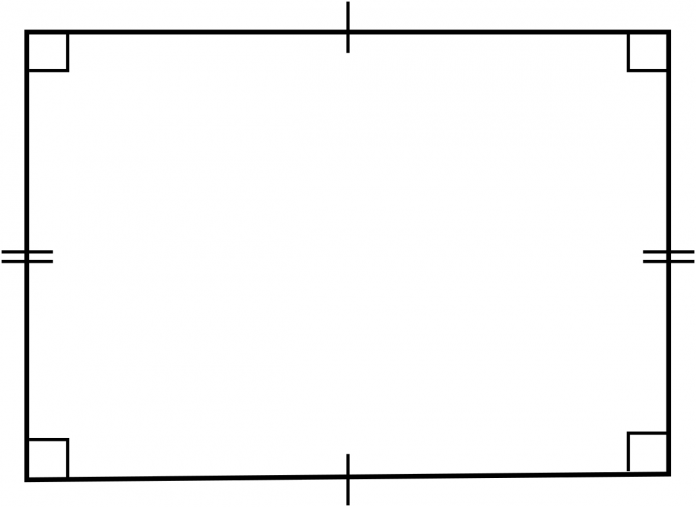
A rectangle is a quadrilateral with four right angles and equal opposite sides. Calculating the area of a rectangle is an important math skill often applied in many real-life situations. Knowing the application of area of rectangle formula is beneficial in many different practical aspects, for example to calculate the various dimension of rectangular objects like floor tiles, plots, rooms, etc. Understanding this vital skill promotes the confidence to apply math in real-life. Let’s learn in detail about how to calculate the area of a rectangle.
The word “rectangle” means a shape that contains four sides intersecting each other at right angles. It originated from the Latin word “rect” meaning right and the French word angle meaning “angle”. Since the opposite sides of a rectangle are parallel, it is a type of a parallelogram. The pair of opposite sides in a rectangle are also equal in length. Thus, every square is a rectangle as it has four right angles. Although, every rectangle is not a square since its length and width may not be the same. It is one of the major differences between a rectangle and a square. A rectangle is also known as an equiangular quadrilateral.
Area of Rectangle
The area of the rectangle is the space occupied inside the four sides of a rectangle. Learning the concept of the area of a rectangle is important to understand many real-life calculations. For example, by applying the area of a rectangle formula we can find the space occupied by various things such as notebooks, walls, laptop screens, doors, etc.
Formula to Calculate the Area of a Rectangle
The formula to find the area of a rectangle is length multiplied by width. It is equal to its length times its width = Length x Breadth ( L x B ).
To find the area of any rectangular objects, take the measure of both longer and the shorter side of the rectangle. The longer side is the length of the rectangle and the shorter side is the width. First note these two dimensions somewhere so that you will have them ready while applying the formula. Here are steps involved in figuring out the area of a rectangle:
- Step 1: Note the given dimensions for length and breadth.
- Step 2: Perform the multiplication of the value of length and breadth.
- Step 3: Give the resultant product as an answer by putting it in square units.
Example, if the longer side i.e. The length of a rectangular room is 15 ft. and the shorter side i.e., width is 10ft then the area of the room is 150 Sq. ft.
Properties of Rectangles
There are various properties that help to identify this unique geometric figure. Learning these properties such as the area and perimeter of rectangle helps to understand rectangles in detail. Some of the most important properties of a rectangles are:
- All the angles of a rectangle are 90 degrees. All the four sides of a rectangle always intersect at a right angle; thus, the four angles created when a rectangle is formed are always 90 degrees.
- Opposite sides of a rectangle are equal and Parallel; one of the most distinctive properties of a rectangle is that its sides are of equal length. The angle between the sides is always 90 degrees, and opposite sides are always parallel.
- Diagonals of a rectangle bisect each other. A diagonal is a line that is formed by joining the opposite corners of the rectangle. In a rectangle, the two diagonals are created when we join opposite corners. The diagonal of the rectangle divides the rectangle into two right triangles.
- The sum of all the internal angles of a triangle is always 360 degrees. Also, the sum of opposite angles of a triangle is always 180 degrees.